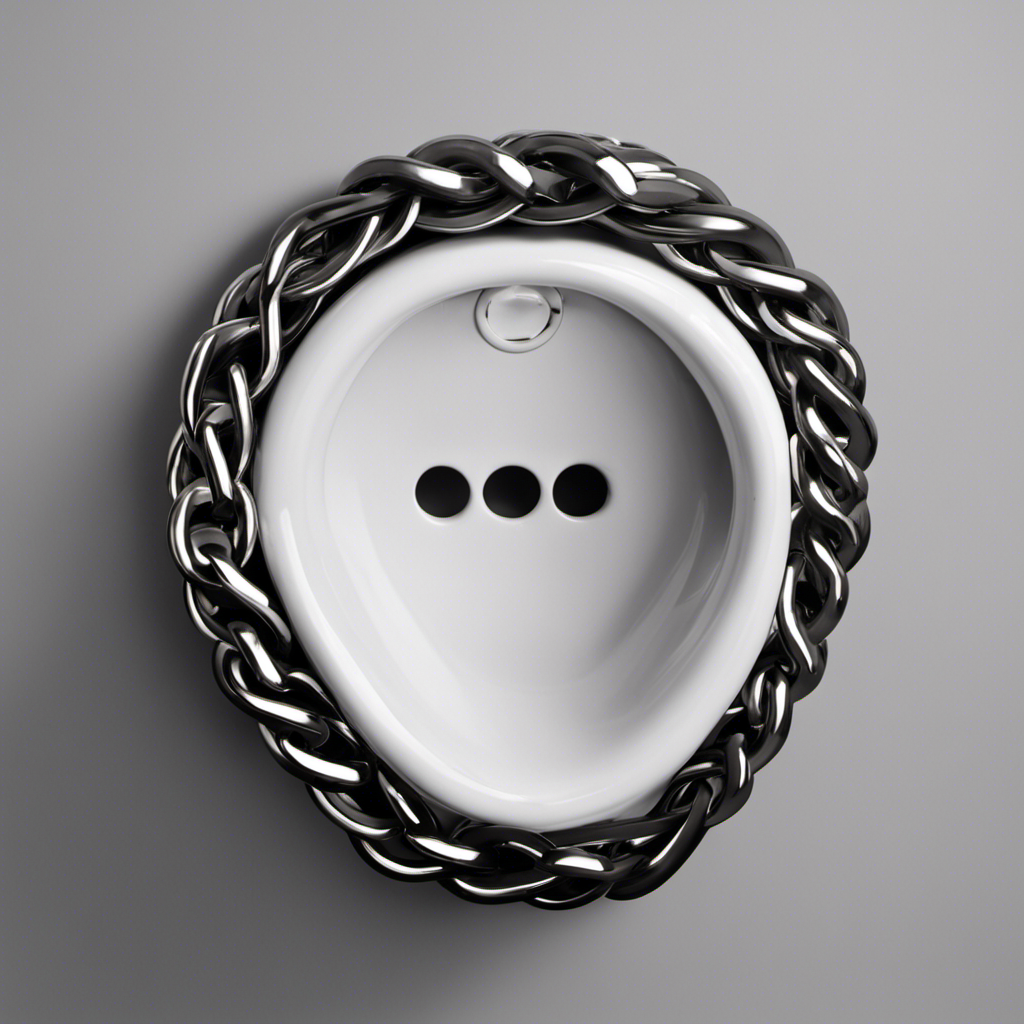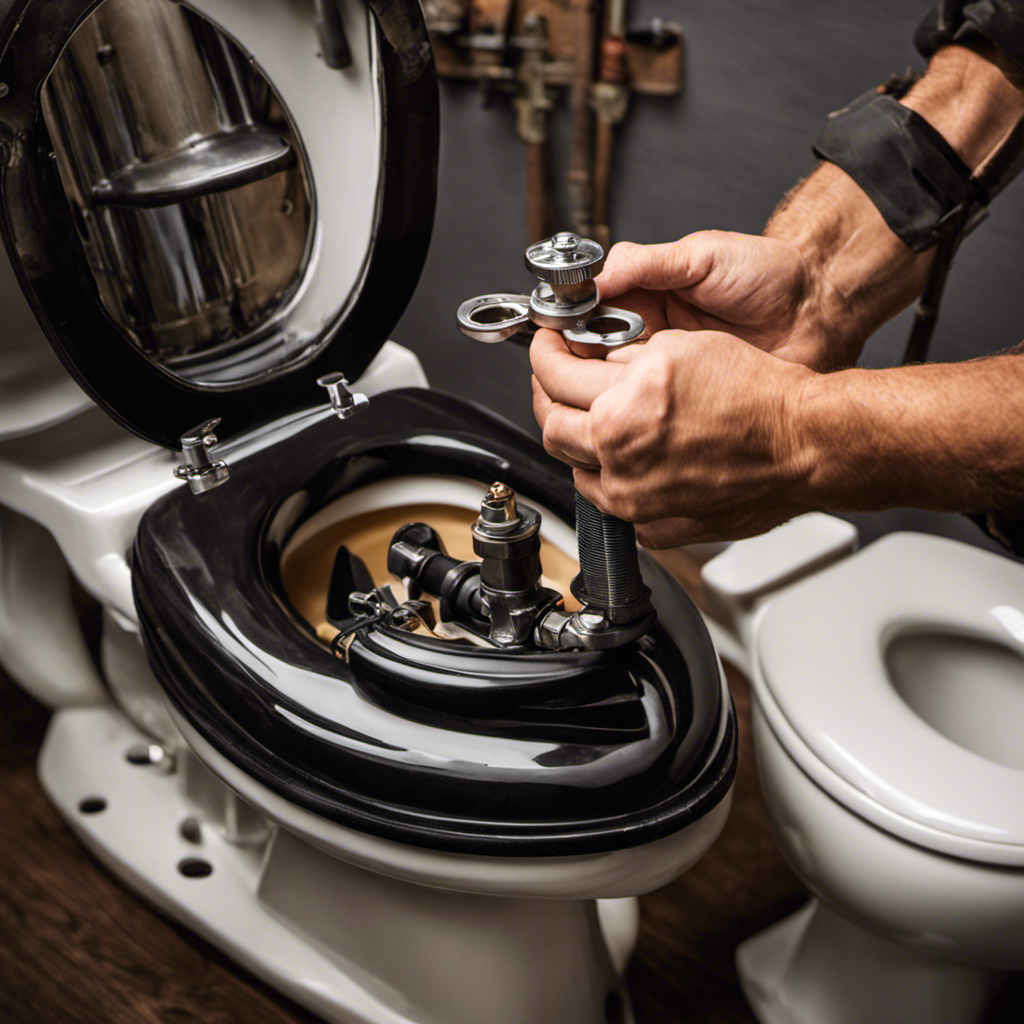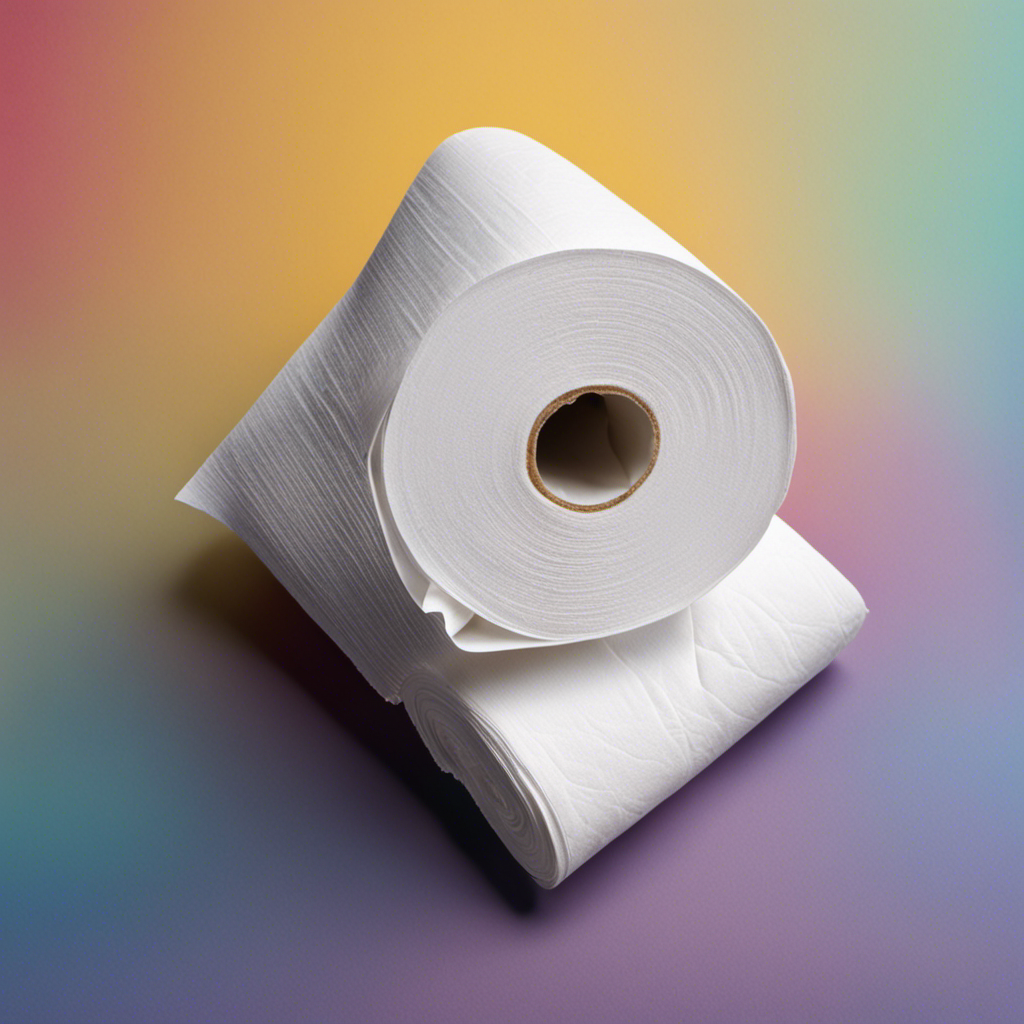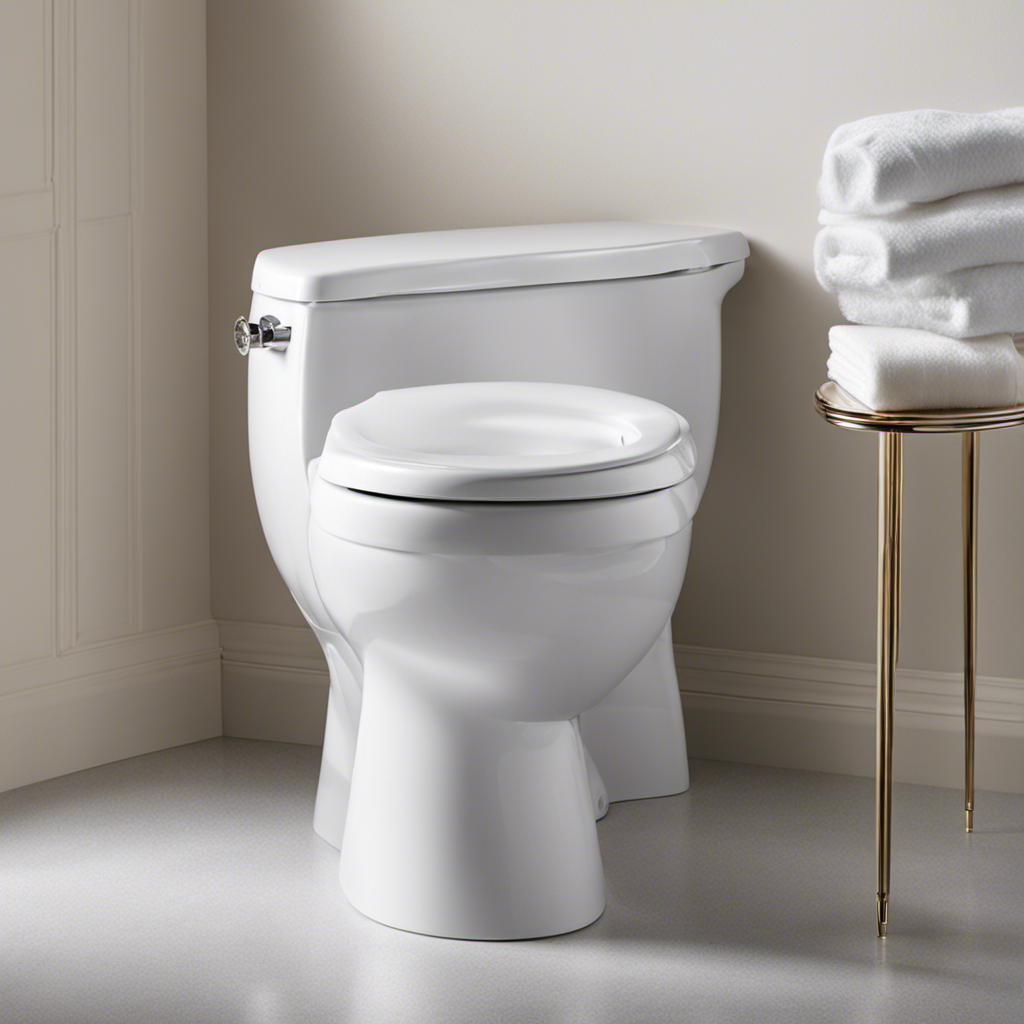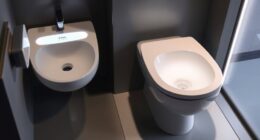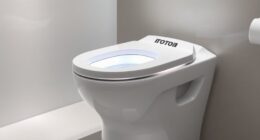Are you tired of your low-pressure toilet leaving you feeling unsatisfied? We’ve got the solutions you need!
Adjusting the water level, clearing out clogs, replacing the flapper valve, installing a pressure-assist device, or even upgrading to a high-efficiency toilet can all improve your flushing experience.
In this article, we’ll guide you through these techniques step by step, so you can master the art of a powerful flush and bid farewell to weak toilet woes.
Let’s get started!
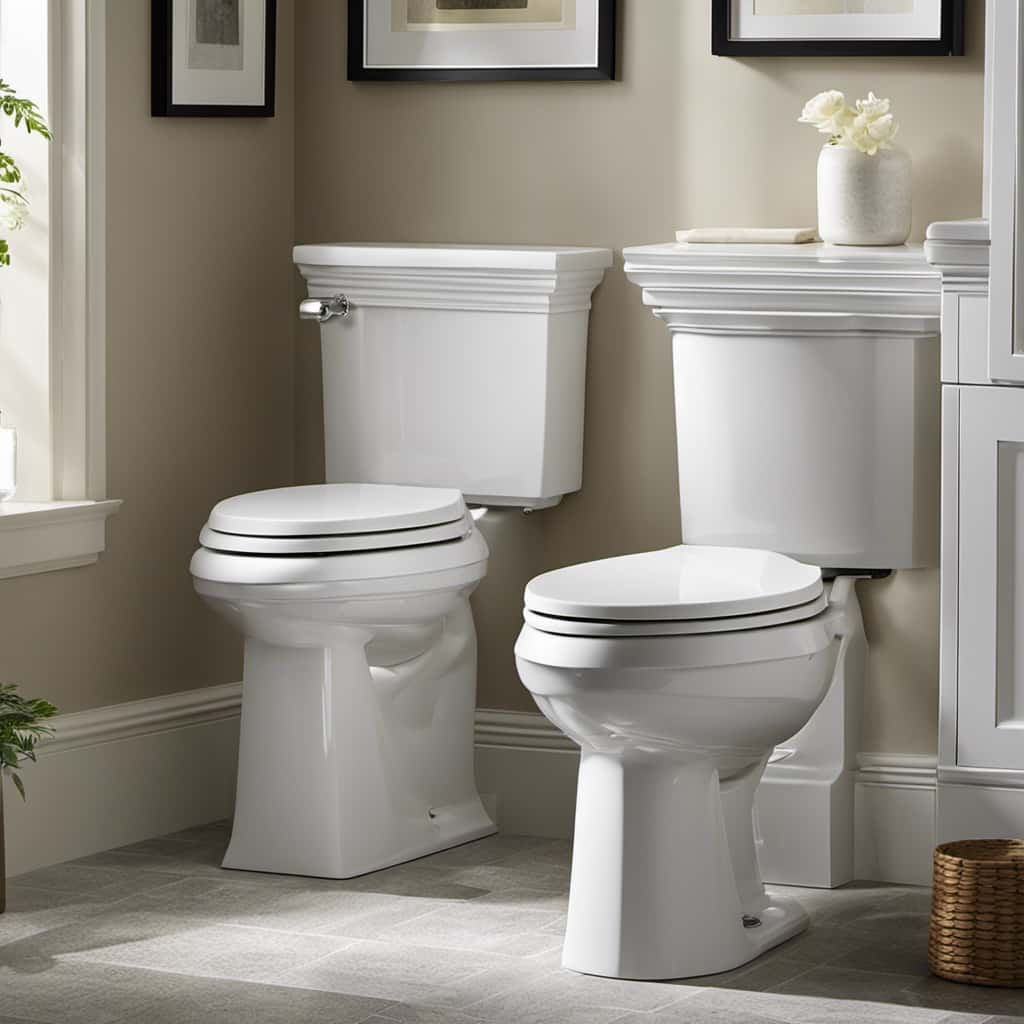
Key Takeaways
- Adjusting the water level can significantly increase flushing power.
- Clearing out any clogs is essential to increase water flow and unclog pipes.
- Replacing the flapper valve can restore optimal water flow and flushing power.
- Installing a pressure-assist device or upgrading to a high-efficiency toilet can improve flushing performance.
Adjust the Water Level
To improve the flush performance of our low pressure toilet, we can easily adjust the water level. This simple adjustment can significantly increase flushing power.
If you’re experiencing weak or incomplete flushes, it’s important to troubleshoot the water supply to ensure it’s at the correct level. Start by locating the fill valve, usually found on the left-hand side of the toilet tank. Adjust the height of the float to increase or decrease the water level.
If the water level is too low, the flush may not have enough power to effectively remove waste. On the other hand, if the water level is too high, it can cause water to overflow.
Clear Out Any Clogs
Next, we should address any potential clogs to further improve the flush performance of our low pressure toilet. Clearing out any clogs is essential to increase water flow and unclog pipes. Here are three steps to effectively clear out any clogs:

- Plunge the toilet: Use a plunger to create suction and dislodge any blockages. Ensure a tight seal around the drain, and push and pull the plunger vigorously to generate pressure that can break up the clog.
- Use a toilet auger: If plunging doesn’t work, a toilet auger can be used. Insert the auger into the toilet bowl and twist the handle to extend it into the drain. Rotate and push the auger to break up or retrieve the clog.
- Chemical drain cleaner: As a last resort, a chemical drain cleaner can be used. Follow the instructions on the product carefully to dissolve the clog and restore water flow.
Replace the Flapper Valve
We can improve the flush performance of our low pressure toilet by replacing the faulty flapper valve with a new one.
The flapper valve is a crucial component that controls the flow of water from the tank into the bowl during a flush.
Over time, the flapper valve can become worn out or damaged, leading to decreased water flow and reduced flushing power.
By replacing the old flapper valve with a new one, we can ensure that the seal between the tank and the bowl is tight, allowing for maximum water flow and improved flushing power.

It’s important to choose a flapper valve that’s compatible with our specific toilet model to ensure proper installation and optimal performance.
Install a Pressure-Assist Device
After replacing the flapper valve, our next step to improve the flush performance of our low pressure toilet is installing a pressure-assist device. This device works by using compressed air to increase water flow and improve flushing power.
Here are three benefits of installing a pressure-assist device:
- Increased flush efficiency: The pressure-assist device creates a powerful water flow that effectively clears waste from the toilet bowl, leading to a more efficient flush.
- Consistent flushing power: Unlike gravity-fed toilets, pressure-assist devices ensure consistent flushing power regardless of the water pressure in your plumbing system. This means you won’t have to worry about weak flushes or clogged pipes.
- Water savings: Pressure-assist devices use less water per flush compared to traditional gravity-fed toilets. This not only helps you save on your water bills but also contributes to environmental conservation.
Upgrade to a High-Efficiency Toilet
To further improve our low pressure toilet’s flush performance, let’s consider upgrading to a high-efficiency toilet.

High-efficiency toilets are designed to use less water per flush compared to traditional toilets, making them an excellent water-saving option. These toilets typically use around 1.28 gallons per flush (gpf), while older models can use up to 3.5 gpf.
By upgrading to a high-efficiency toilet, you can significantly reduce water consumption and lower your water bills. Additionally, these toilets offer environmental benefits by conserving water resources and reducing the strain on wastewater treatment plants.
Many high-efficiency toilets also come with improved flushing mechanisms and design features that optimize performance, ensuring a powerful and effective flush every time.
Upgrading to a high-efficiency toilet is a smart investment that will enhance your bathroom experience while promoting sustainability.
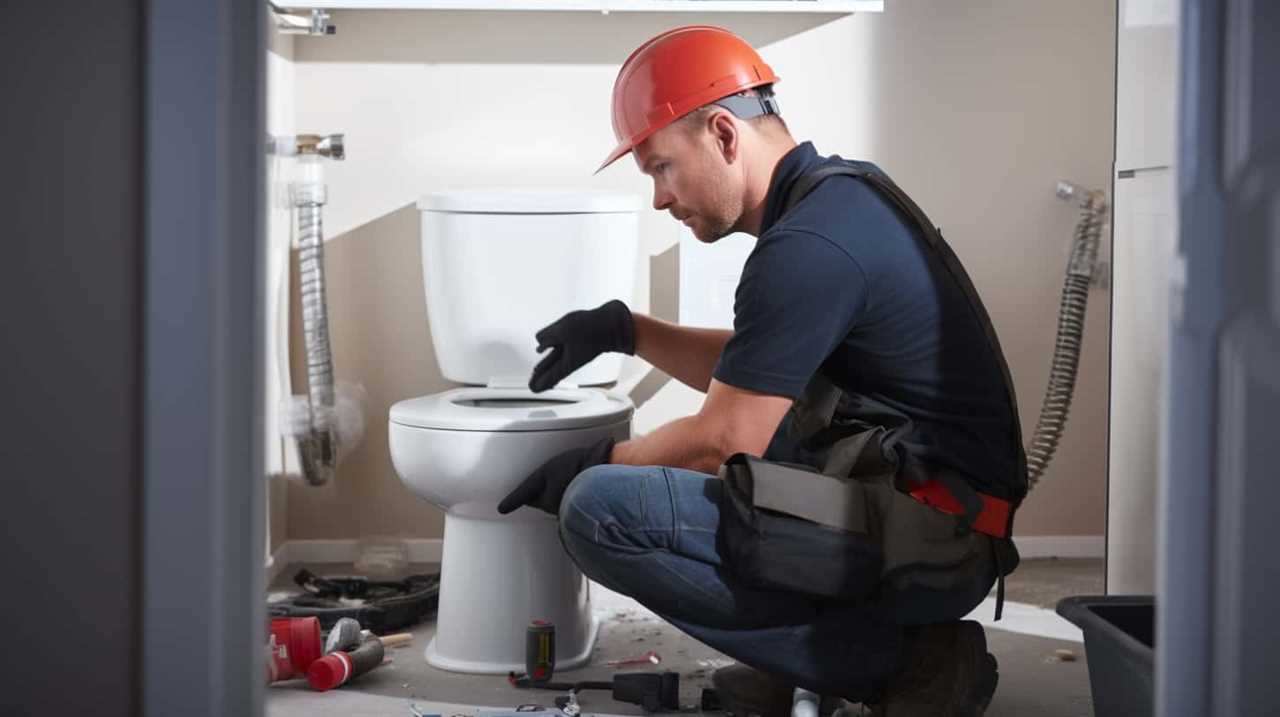
Frequently Asked Questions
How Do I Know if My Toilet Has Low Water Pressure?
To determine if our toilet has low water pressure, we can check for weak flushing, slow refilling, or incomplete bowl clearing. Troubleshooting low water pressure in a toilet includes inspecting the fill valve, supply line, and water pressure regulator.
Can a Low Pressure Toilet Be Fixed by Simply Adjusting the Water Level?
Adjusting the water level may help troubleshoot low pressure issues in a toilet. However, it is important to consider other factors such as clogs, faulty valves, or inadequate water supply for a comprehensive solution.
Are There Any Alternative Methods to Clearing Out Clogs in a Low Pressure Toilet?
There are alternative methods to unclog low pressure toilets, such as using a plunger or a drain snake. These techniques can effectively clear out clogs and improve the flushing performance of your toilet.
Is It Necessary to Hire a Professional Plumber to Install a Pressure-Assist Device?
It’s not always necessary to hire a professional plumber for installing a pressure-assist device. DIY installation has pros and cons. Troubleshooting common issues with pressure-assist devices can be done with proper technical knowledge.
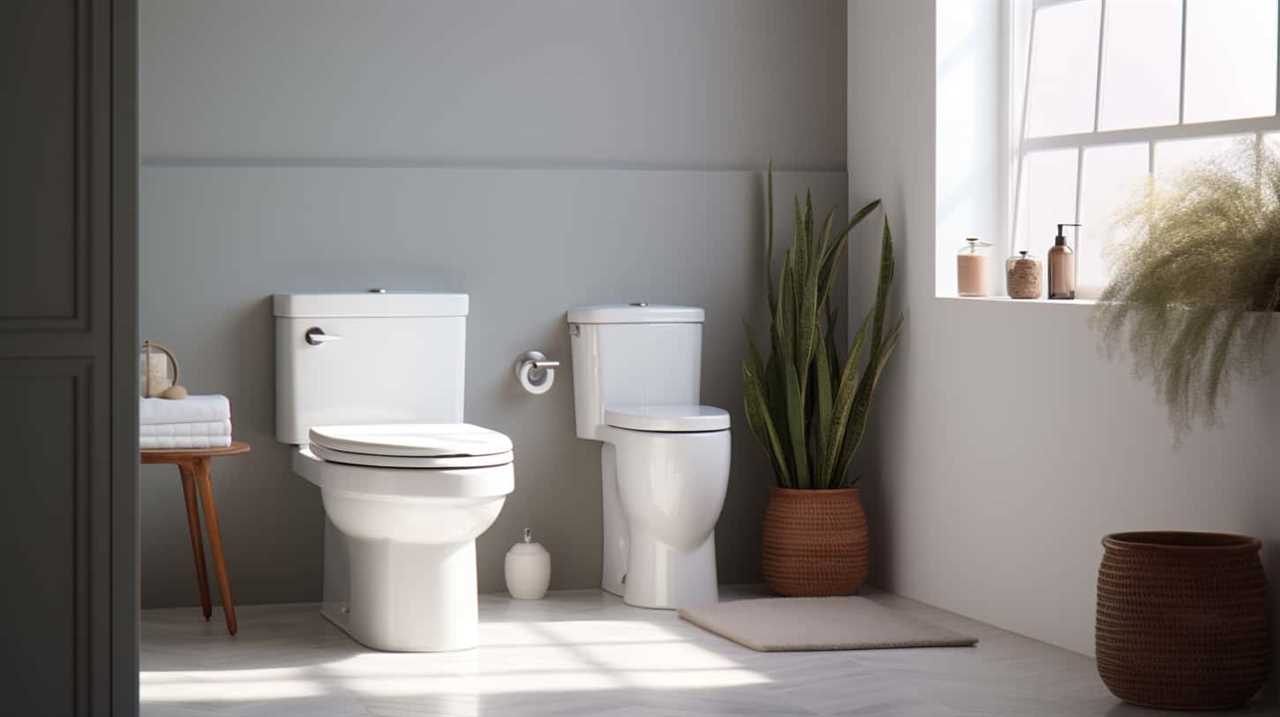
What Are the Advantages of Upgrading to a High-Efficiency Toilet Instead of Using a Pressure-Assist Device?
Upgrading to a high-efficiency toilet offers several advantages over using a pressure-assist device. These toilets use less water, have improved flushing power, and are more environmentally friendly. They are a great solution for low pressure toilet problems.
Conclusion
To optimize the performance of your low-pressure toilet, take simple steps like adjusting the water level, clearing out clogs, and replacing the flapper valve.
For a more powerful flush, consider installing a pressure-assist device or upgrading to a high-efficiency toilet.
By implementing these improvements, you can enhance the flushing capability of your toilet, ensuring a more efficient and satisfying experience.


